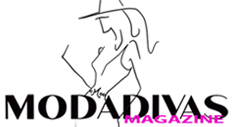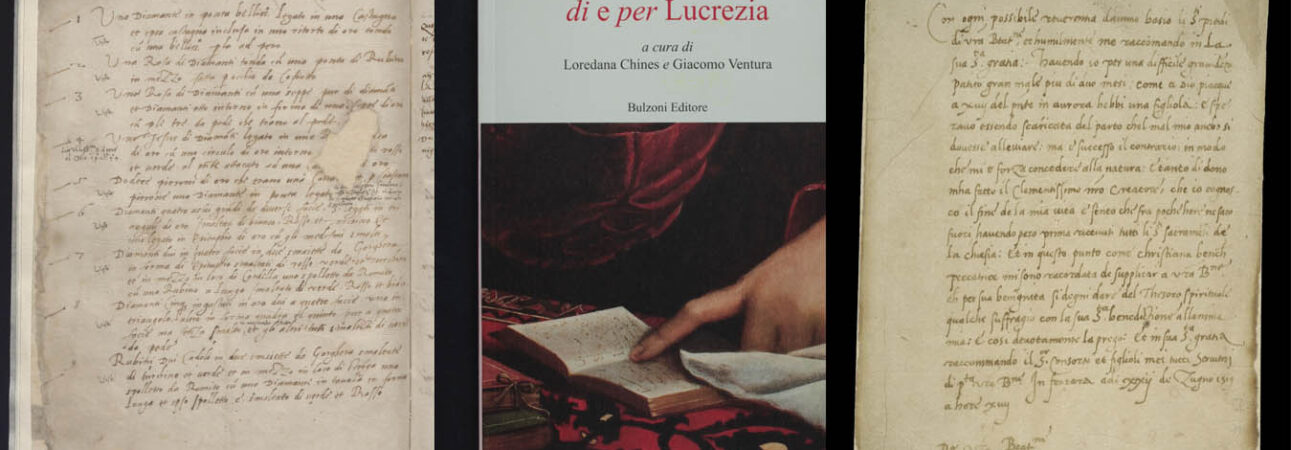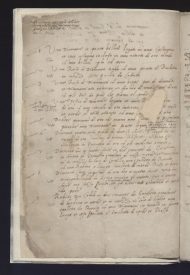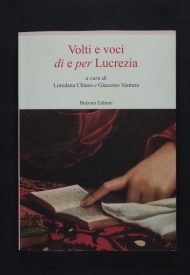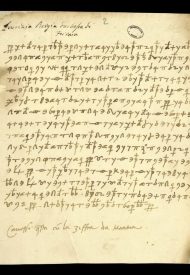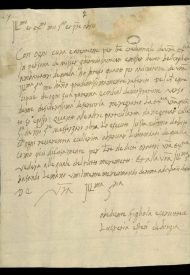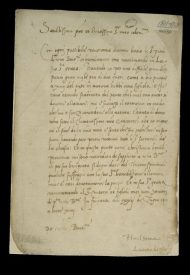Lucrezia Borgia d’Este unveiled
The letters and registers of the Este duchess held in the State Archives of Modena shed new light on the figure of Lucrezia. The documents digitised in very high definition are now available online at Lodovico Media Library.
“Lucretia Estense de Borgia” or “the Duchess of Ferrara”, this is how Lucrezia (1480 – 1519) signed her name in the letters written between 1502 and 1519, a large number of which are kept in the State Archive of Modena and have now been digitised thanks to the support of the Fondazione di Modena and the Art Bonus.
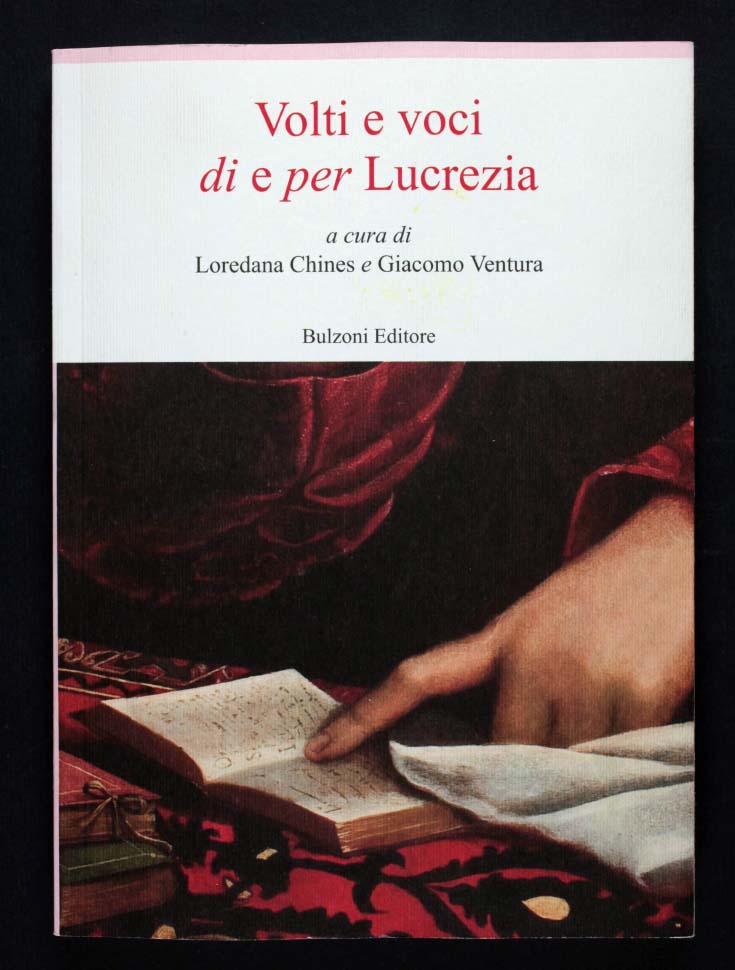
Daughter of Cardinal Rodrigo Borgia, later Pope Alexander VI, and Vannozza Cattanei, her controversial figure has inspired numerous literary, theatrical and cinematographic works over the centuries.
A life marked by the evil tongues and political games of the powerful Borgia family, she was accused of revenge, intrigue and incest, but Lucrezia was also a great supporter of the arts and letters.
Known for her beauty, she was among the most coveted women of her time. After unfortunate marriages to Giovanni Sforza, Lord of Pesaro, and Alfonso, illegitimate son of Alfonso II of Aragon, King of Naples, her third marriage to Alfonso I d’Este, Duke of Ferrara, was happy and fortunate.
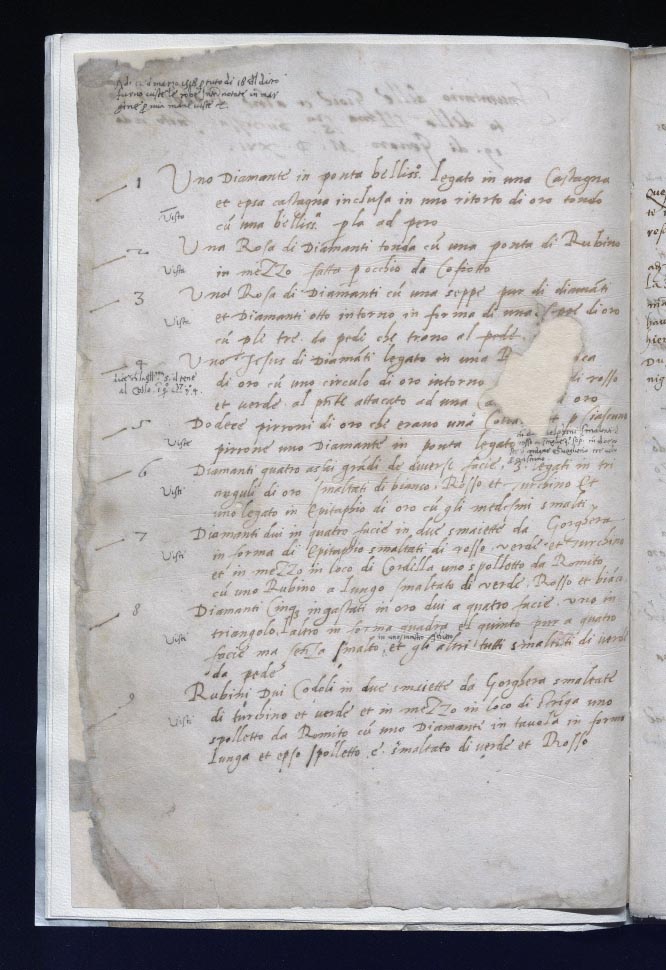
To the Ferrara period dates the corpus of autograph letters preserved among the precious documents of the Archivio Segreto Estense, kept in the State Archive of Modena.
The Modenese nucleus of missives comprises roughly one third of the approximately 900 total letters known today that can be traced back to Lucrezia Borgia, and thus constitutes a privileged point of observation in several respects. In fact, the duchess’s correspondence is an extremely important source for understanding the everyday life of one of the most famous noblewomen of the Italian Renaissance.
Among the letters, details emerge on the political issues that the Estense Duchy was facing at the beginning of the 16th century. There is also a great deal of information that sheds new light on the many faces of Lucrezia and provides scholars with more insight into the historical and cultural context of Renaissance courts, the network of relationships and ties that were maintained and the communication strategies used.
The ambitious study, reorganisation, securing, description and digitisation project promoted by the State Archives was made possible thanks to the support of the Fondazione di Modena and the Art Bonus, with the aim of promoting the knowledge and valorisation of a core of documentation of the Estense cultural heritage.
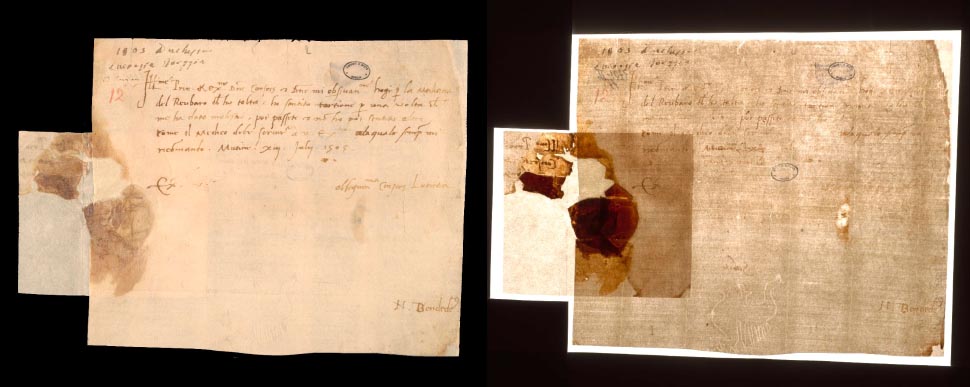
Following the conservation work carried out by the Internal Restoration Laboratory of the Modena State Archives, the 280 letters that make up the Modena corpus were acquired front and back with gigapixel resolution by Haltadefinizione, a tech company of the Franco Cosimo Panini publishing house specialising in the digitisation of paintings, documents and ancient manuscripts.
Not only gigapixels, among the technologies deployed during the acquisition campaign were also multispectral surveys. Transillumination, or transmitted light, was combined with visible gigapixel photography in order to highlight paper watermarks. The technique involves illuminating an object from the opposite direction to the observation point. In this way, if the object has transparencies, the light is transmitted through the object only in the finest areas.
This type of imaging highlights details that would otherwise not be visible or difficult to detect, such as watermarks, and is particularly suitable for the study and preservation of historical documents, old books, photographs and fragile materials. The digitisation of Lucrezia Borgia’s letters is an important part of the preservation of our heritage.
The digital acquisition has in fact made it possible to obtain a complete and very detailed overview of the state of conservation, setting a benchmark for the future.
The digitisation campaign also involved 16 registers of Lucrezia’s wardrobe, possessions, annuities and expenses, amounting to some 3,158 scans.
The digital reproductions of Lucrezia’s documents, accompanied by an exhaustive set of information, are now freely available on Lodovico Media Library (https://lodovico.medialibrary.it/ ), the digital library developed by the Interdepartmental Research Centre on Digital Humanities of the University of Modena and Reggio Emilia (DHMoRe). Based on the most modern software for high-definition visualisation and manipulation of digital images, Lodovico Media Library is a federative platform that aims at enhancing the historical and cultural heritage of the Modena area and, more generally, of the Emilia-Romagna region in an integrated manner, and at promoting its dissemination to the general public, without renouncing its rigorous scientific nature.
To date, after just under two years of activity, Lodovico Media Library already hosts almost 10,000 digital or digitised documents and collaborates with around twenty public and private organisations in the provinces of Modena, Bologna, Reggio Emilia, Parma and Rimini. The development of the platform was entrusted to a group of leading companies in the field of digitalisation of cultural heritage (Haltadefinizione and Mida Informatica), cataloguing (Hyperborea), archiving and management of high and very high definition images (Memooria) and in the management of digital libraries (Horizons Unlimited).
An example of how collaboration and contamination between traditional knowledge and new technologies can lead to the creation of very high quality products, usable at different levels, which become true instruments of knowledge and dissemination of culture for everyone.
Statements
Paolo Cavicchioli, President of the Modena Foundation
“One of the characteristics of the Foundations of Banking Origin is that of being able to put into practice the fundamental principles of our Constitution where, in Article 9, we find the commitment to “the development of culture and scientific and technical research, the protection of the landscape and of the historical and artistic heritage of the Nation”. The Digital Humanities project, which the Modena Foundation wholeheartedly supports, does exactly this: it protects our historical and artistic heritage with new tools through the work of young researchers, implementing a real democratisation of culture’.
Lorenza Iannacci, Director of the State Archives of Modena
“The digitisation of the papers of Lucrezia Borgia d’Este represents the crowning achievement of the cycle of events and manifestations with a high cultural profile launched in 2019 for the celebrations of the 500th anniversary of the duchess’ death. It is an opportunity to tell the multifaceted story of this well-known female character, a challenge to make our rich heritage known and appreciated not only by insiders”.
Matteo Al Kalak, Director of DHMoRe and scientific head of Lodovico Media Library
“For the extreme historical and cultural relevance of the documentation and for the quality of the technologies employed, the digitisation of Lucrezia Borgia’s letters and registers constitutes a model of digital enhancement of the documentary heritage and an example of virtuous collaboration between public and private entities to make the treasures of our archives increasingly accessible to the community”.
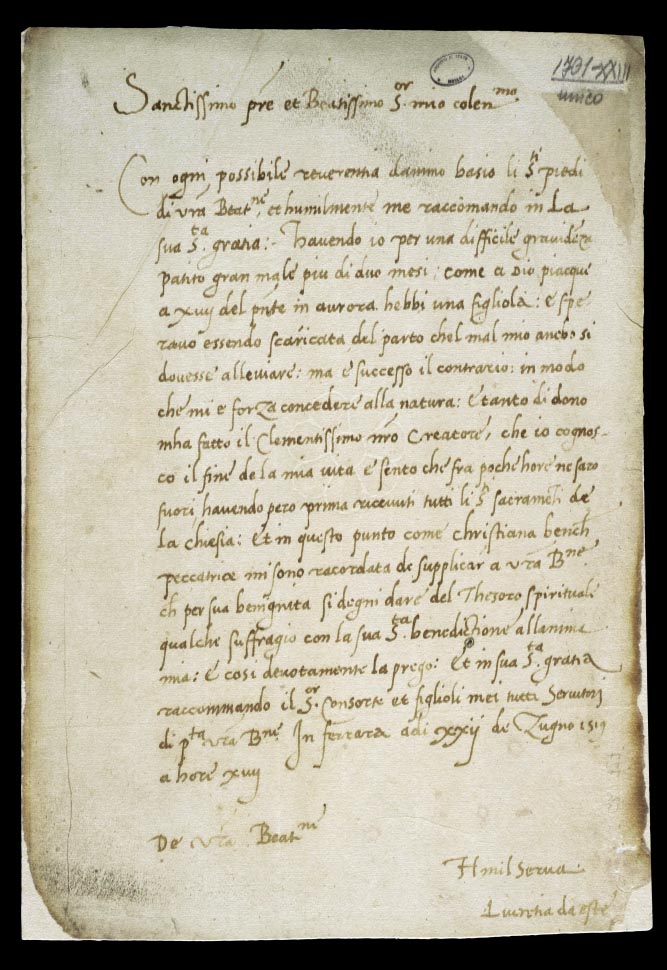
Lucia Panini, President of Haltadefinizione
“Making the precious correspondence available in digital format has made the documents easily accessible to a wider public, while at the same time protecting the preservation of the originals. The multispectral imaging techniques used during the digitisation campaign have allowed us to document even the watermarks with great precision. Thanks to digital technology, scholars from all over the world will be able to study and compare them. We are proud to have taken part in this project and to continue our collaboration with the State Archives of Modena’.
Presentation of the digitisation project and the book Faces and Voices of and for Lucrezia
An afternoon of studies “Lucrezia Borgia d’Este digital and not only…”.
Friday 14 April 2023, 16:00 – 18:00 Aula Magna del Rettorato, via Università 4, Modena
On Friday 14 April, the Aula magna of the Rectorate of Modena will host an afternoon of studies entitled “Lucrezia Borgia d’Este digitale e non solo…”, an important initiative to present two fundamental achievements linked to Lucrezia, as part of the projects launched on the occasion of the five centuries since the death of the Este duchess, which has seen, starting from 2019, the organisation of many initiatives, made possible also thanks to the support of the Fondazione di Modena and the Art Bonus.
The dense programme includes first of all the institutional greetings delivered by Paolo Cavicchioli, President of the Fondazione di Modena, as well as by the representatives of the Institutes organising the event: Lorenza Iannacci, Director of the State Archives of Modena, and Loredana Chines, Scientific Director ARCE-Archivio Ricerche Carteggi Estensi and Deputy Director of the Department of Classical Philology and Italianistics of the University of Bologna.
We will continue with the presentation of the digitisation project of Lucrezia Borgia’s papers kept in the State Archives of Modena, a complex and highly professional activity carried out by Haltadefinizione. This work, accessible through Lodovico Media Library, will be illustrated by Luca Sandoni, Lodovico’s project manager, and Lucia Panini, President of Haltadefinizione.
In conclusion, there will be a presentation of the book Volti e voci di e per Lucrezia, edited by Loredana Chines and Giacomo Ventura and published by Bulzoni. Coordinated by Gian Mario Anselmi (Department of Classical and Italianistic Philology of the University of Bologna), Elisabetta Menetti (Department of Linguistic and Cultural Studies of the University of Modena and Reggio Emilia) and Paola Vecchi (Department of Classical and Italianistic Philology of the University of Bologna) will illustrate the book.
This work proposes the papers delivered at the study conference of the same name held in Bologna in December 2019.
That meeting was the occasion to define, thanks to interdisciplinary studies, the profile of Lucrezia Borgia, a woman whose memory is controversial, despite the interest she has aroused and continues to nourish (let us remember that she has been the subject of novels, comic strips, films and television series), due to the numerous divergent representations that have been given of her over the centuries. The volume that brings together these contributions is therefore a milestone, indispensable for anyone wishing to analyse the true figure of the Este duchess.
C.St.: Haltadefinizione Ufficio stampa
